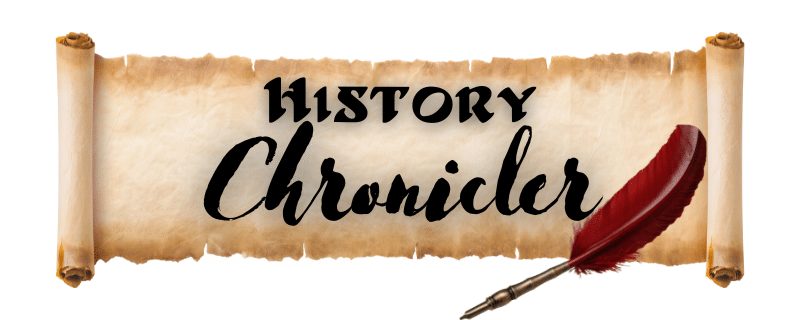[VIDEO] 5 of the Most Bloodthirsty Rulers Throughout History
5 of the Most Bloodthirsty Rulers Throughout History
Transcript:
Among the most bloodthirsty rulers in history, five names repeatedly rise to the top: Genghis Khan, Adolf Hitler, Joseph Stalin, Leopold II of Belgium, and Tamerlane. Each of these men commanded fearsome authority, and their reigns are remembered not only for their scale of influence but for the devastating death tolls they left behind.
Throughout history, the pursuit of power has often come with staggering human costs. While many rulers expanded their empires through strategy and diplomacy, others left behind a darker legacy—one marked by brutality, mass killings, and systemic terror.
Genghis Khan, founder of the Mongol Empire in the early 13th century, is often credited with uniting the Mongol tribes into a military machine that stormed across Asia and into Europe. His conquests led to the deaths of an estimated 20 to 40 million people, either through direct slaughter or the destruction of infrastructure and agricultural systems that sustained entire regions. Cities that resisted his forces were often annihilated entirely, their populations massacred. While some admire Genghis Khan for his vision of a unified Silk Road and cultural exchange, there’s no denying that his campaigns were fueled by extreme, deliberate violence.
Adolf Hitler, as the dictator of Nazi Germany, orchestrated one of the most horrific genocides in human history. His ideology of racial purity and German supremacy sparked World War II and led to the deaths of over 70 million people worldwide. Central to his legacy is the Holocaust, in which six million Jews—along with millions of Romani, disabled individuals, and political dissidents—were exterminated in a state-sponsored campaign of terror. Hitler’s combination of industrialized killing, propaganda, and authoritarian control marks his rule as uniquely cold and systematized in its brutality.
Joseph Stalin, leader of the Soviet Union from the mid-1920s until his death in 1953, wielded terror as a tool of governance. Under his regime, millions perished through forced collectivization, man-made famines (most notably the Holodomor in Ukraine), purges, executions, and the gulag labor camp system. Stalin’s paranoia led to the imprisonment or execution of political rivals, intellectuals, and ordinary citizens alike. Though some credit him with industrializing the USSR and defeating Nazi Germany, the cost in human lives—estimated between 15 and 20 million—is staggering.
Leopold II of Belgium, while not as widely known as others on this list, ruled over one of the most grotesque colonial enterprises in modern history. As the private owner of the Congo Free State from 1885 to 1908, Leopold exploited the Congolese people through a brutal rubber trade enforced by torture, mutilation, and murder. Entire villages were decimated, and forced labor was maintained through hostage-taking and executions. Historians estimate that as many as 10 to 15 million people died under his regime, making his legacy one of the darkest in the era of European imperialism.
Tamerlane, also known as Timur, was a 14th-century conqueror who sought to revive the Mongol Empire’s glory. While not as well-known to the modern public, Tamerlane’s campaigns were marked by extreme cruelty. He reportedly built towers from the skulls of those he defeated and orchestrated massacres across Persia, Mesopotamia, and India. His sack of Delhi in 1398 led to the deaths of over 100,000 civilians in a single day. Like Genghis Khan, Tamerlane’s military skill was undeniable—but it was paired with a ruthless desire to instill fear and dominate through terror.
What unites these five rulers isn’t just the staggering death tolls associated with their names—it’s the way they normalized violence as a governing strategy. In many cases, mass murder wasn’t collateral damage; it was a calculated means to achieve ideological, political, or economic goals. Whether through war, colonialism, purges, or genocide, these leaders institutionalized cruelty on an unprecedented scale.
Understanding these figures helps shed light on the darker possibilities of absolute power and the importance of human rights, accountability, and historical memory. These rulers may have shaped the world map, but they also left scars that continue to define regions and cultures to this day.

![[VIDEO] 5 of the Most Bloodthirsty Rulers Throughout History](https://historychronicler.com/wp-content/uploads/2025/06/Screenshot-2025-06-05-at-4.07.17 PM.jpg)


![[VIDEO] Most Devastating Floods in U.S. History](https://historychronicler.com/wp-content/uploads/2025/07/Screenshot-2025-07-08-at-3.33.38 PM-768x512.jpg)
![[VIDEO] The Dancing Plague of 1518](https://historychronicler.com/wp-content/uploads/2025/04/Screenshot-2025-04-09-at-9.02.17 PM.jpg)
![[VIDEO] Wojtek: The Bear Who Went to War](https://historychronicler.com/wp-content/uploads/2025/03/Screenshot-2025-03-16-at-2.46.44 PM.jpg)
![[VIDEO] Pepsi Cola's Navy](https://historychronicler.com/wp-content/uploads/2025/08/Screenshot-2025-08-28-at-7.08.44-PM-768x512.jpg)
![[VIDEO] Wilmer McLean's Unusual Connection to the American Civil War](https://historychronicler.com/wp-content/uploads/2025/08/Screenshot-2025-08-28-at-4.27.46-PM-768x512.jpg)
![[VIDEO] How Fur Farms, World War II, and a Bomb Created Germany’s Raccoon Invasion](https://historychronicler.com/wp-content/uploads/2025/07/Screenshot-2025-07-07-at-1.57.45 PM-768x512.jpg)